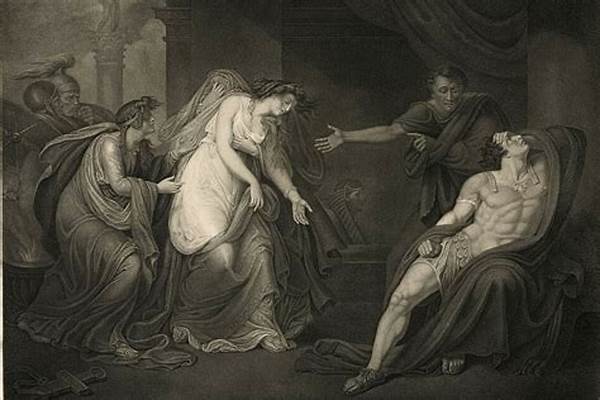Romantic tales that transcend the boundaries of culture and geography have been a subject of fascination for centuries. Among these narratives, cross-cultural historical love stories hold a unique place, embodying both the richness of diverse traditions and the universal nature of love. Through these stories, we gain insight into the challenges and triumphs of lovers who dared to defy the conventional norms of their time, thereby enriching our understanding of cultural synthesis and the enduring power of love.
Read Now : Timeless Yearning In Classic Stories
Notable Cross-Cultural Historical Love Stories
Cross-cultural historical love stories present narratives that seamlessly blend elements of various traditions, illustrating how love can bridge cultural divides. One such iconic story is the romance between Cleopatra, the Egyptian queen, and the Roman general Mark Antony. Their relationship not only represents the union of two powerful empires but also highlights the complexities and political intricacies of their era. Another celebrated tale is that of Pocahontas and John Smith, whose relationship symbolizes the intersection of Native American and English cultures during the early colonial period. Through these and many other narratives, cross-cultural historical love stories reveal how deeply love can resonate, transcending cultural and historical barriers.
Elements of Cross-Cultural Historical Love Stories
1. Cultural Synthesis: Cross-cultural historical love stories often involve individuals from distinct cultural backgrounds uniting, illustrating cultural integration.
2. Historical Context: These stories are grounded in distinct historical periods, providing insight into the social and political dynamics of the time.
3. Challenges Overcome: The protagonists frequently face societal opposition, reflecting the hardships of navigating a cross-cultural relationship.
4. Timeless Appeal: The universality of love depicted in these stories ensures their enduring resonance across generations.
5. Symbolic Unions: Many of these tales symbolize broader themes of unity and understanding between different cultures.
Impact of Cross-Cultural Historical Love Stories on Literature
In literature, cross-cultural historical love stories serve as a canvas illustrating the intersection of distinct societies. These narratives highlight how individual experiences can drive cultural change and challenge societal norms. By examining the historical context around these love stories, readers gain an appreciation for the diverse influences that shape romantic traditions across different epochs. Such stories foster a greater understanding of the complexities inherent in cross-cultural engagements, drawing attention to how love can both clash with and complement societal expectations. As literature continues to evolve, cross-cultural historical love stories remain a testament to the diverse nature of human experiences and the enduring ability of love to unite disparate cultures.
Read Now : Emotional Communication In Partnerships
Exploring the Themes in Cross-Cultural Historical Love Stories
The themes in cross-cultural historical love stories are as varied as the cultures they represent. Commonly, these narratives explore themes of identity, sacrifice, and reconciliation. The characters often navigate cultural differences with grace, showcasing the transformative power of love that transcends boundaries. These tales also emphasize the notion of love as a catalyst for cultural exchange, fostering new understandings and bridging gaps between disparate traditions. In essence, cross-cultural historical love stories remind us of the universality of human emotions and the shared desire for connection despite cultural divergences.
The Role of Cross-Cultural Historical Love Stories in Cultural Dialogue
Cross-cultural historical love stories play a pivotal role in facilitating cultural dialogue. They serve not only as a reflection of past societies but also as a medium for encouraging contemporary discussions about cultural integration and acceptance. By delving into these stories, individuals from different backgrounds can develop a nuanced comprehension of each other’s histories and values. These narratives inspire mutual respect and understanding, acting as a bridge across cultural fissures. Through cross-cultural historical love stories, we are reminded of the potential for harmony inherent in love, uniting us in a shared human experience.
Analyzing the Historical Significance of Cross-Cultural Love
An analysis of cross-cultural historical love stories provides key insights into the societal dynamics of the past. These narratives often highlight the struggles faced by couples in maintaining their relationships amidst cultural prejudices and societal norms. Such challenges underscore the resilience required to sustain cross-cultural unions, reflecting broader historical and sociocultural themes of integration versus segregation. On a symbolic level, these stories exemplify the broader sociopolitical climates of their respective eras, offering multifaceted perspectives on historical events and movements, and emphasizing the persistent efforts toward cultural synthesis.
Conclusion on Cross-Cultural Historical Love Stories
In conclusion, cross-cultural historical love stories occupy a significant space within the literary and cultural landscapes, offering profound insights into the complexities of human relationships. These narratives not only recount romantic engagements that defy cultural boundaries but also serve as windows into the diverse historical contexts from which they emerge. By engaging with these stories, we enhance our understanding of how love transcends borders and adversities, highlighting our collective humanity. These tales invite readers to reflect on the nature of love and its potential to bridge divides, fostering a more interconnected and empathetic world.
